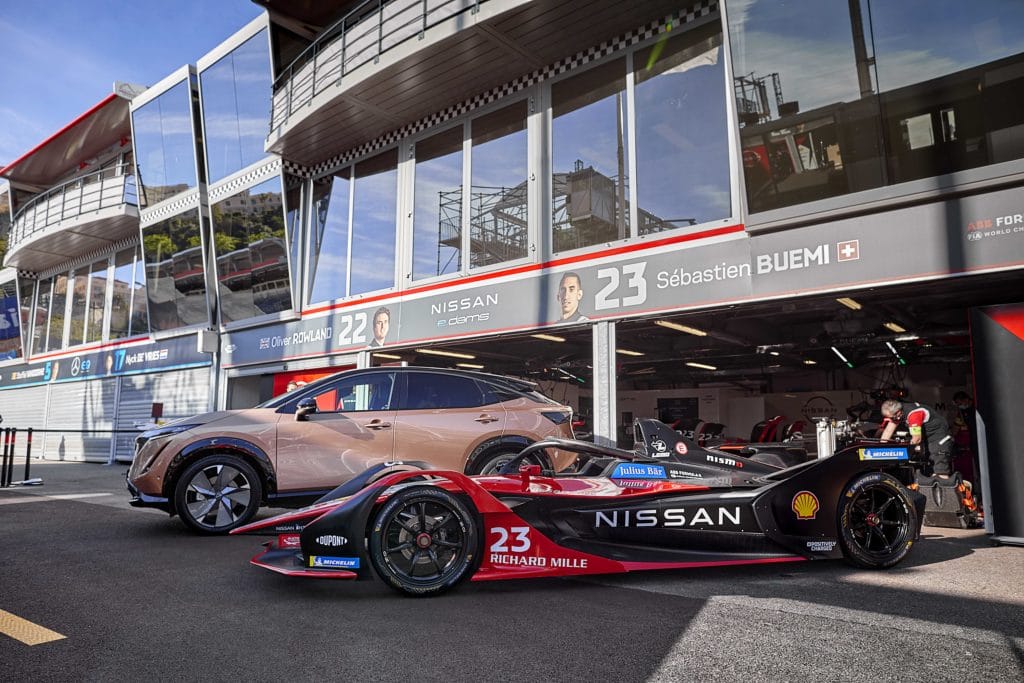Nissan launches brain function development program to improve driver performance

[ad_1]
Nissan has launched a groundbreaking program focused on brain function and anatomy research to improve its drivers’ performance in the Formula E series. Drivers Sebastien Buemi and Oliver Rowland hope to improve their training and development as they are monitored for improved speed, reaction and consistency on the track.
For those of you in the know, the Formula E series drives electric cars that look like F1 or Indycars crossed with something from Star Wars. They drive quietly but quickly on street circuits all over the world and are represented by well-known automobile manufacturers and drivers. Whatever advances we see in making electric cars faster, longer-range, and more fun to drive, they will come from the Formula E series – and once again shows that racing is the best R&D facility you can get. And Nissan looks like they’ll take their R&D game to the next level.
The Brian business
Years ago when Alex Zanardi drove in Formula 1, he had one gigantic Accident in the practice in Spa, Belgium. When he got out of Eau Rouge, he lost it and hit the barriers at incredibly fast speeds, smashed the car, knocked himself unconscious and ended up in the hospital. Two days later, at a press conference, Zanardi cracked: “The doctors did a CAT scan of my brain and were very surprised that I actually had a brain.” It was a funny, diabolical racing driver joke, but it also touched upon an implicit truth: racing drivers don’t show much thinking. Most normal people would immediately dismiss the idea: “Are you crazy? How fast should I drive the car? “
But indeed, racing drivers to do have brains in their skulls, and Nissan has just started researching human factors to help their drivers use their brains more effectively. In all honesty, I’m surprised it took someone so long to work on this end of things.
A complete regime
First of all, modern racing drivers train something like no one else; Weight training, aerobic capacity, visual acuity, day in, day out, they’re working on this stuff. Second, data is very easy to obtain and store nowadays. Most modern racing cars – and Formula E racing drivers are no exception – are wired with so many sensors in the Wazoo that engineers can get lost in all the data. And on top of that, storing the data is much easier these days. Modern racing data recorders are about the size of a couple of smartphones. So why not get all the information you can, edit it, and find out what your car is doing?
And most importantly, why not find out what yours driver is doing?
That brings us to Nissan’s latest attempt. It’s called Nissan Brain to Performance, and it uses advanced brain imaging and analysis to identify the functional characteristics of high-performing, professional drivers. By the time they are done, Nissan Brain to Performance plans to develop tailored, optimized training to improve brain functions and anatomy related to driving and racing.
“With this groundbreaking program, we want to understand our racing drivers’ brain functions like never before and push the limits of performance on the track in Formula E,” said Tommaso Volpe, Nissan Global Motorsports Director. “Every tenth of a second counts in Formula E, so we’re excited to see how our state-of-the-art Nissan research team can improve Seb and Oli’s already powerful brain functions.”

Brain-to-performance program
Dr. Lucian Gheorghe, a leading provider of brain analysis and training, coordinates the Nissan Brain to Performance program. The immediate priority for Nissan is to improve the performance of Nissan’s Formula E racers.
“Our brain is incredibly powerful. Without our noticing it, they fulfill a multitude of critical functions every second that we drive our cars, ”said Dr. Gheorghe. “Our highly skilled and experienced Nissan Formula E drivers perform these functions under high pressure and at high speed while constantly looking for faster times. Our new Nissan Brain to Performance program seeks to understand what the electrical activity of your brain is all about that enables you to do what you do. “
The first phase of Nissan’s new program will begin with a detailed analysis and testing of the brain activity of Formula E racing drivers, comparing them to a control group of “average” non-racing drivers. All drivers, professional or not, will perform a range of tasks on state-of-the-art driving simulators while their brain activity is monitored and recorded. Based on these results, a tailor-made driver training program with electrical brain stimulation will be developed to improve the driver’s performance.

Research priorities
The main research areas will be threefold. First: understand how the brains of Nissan Formula E drivers differ from average drivers. By determining a spectrum of a driver’s brain activity, the program will provide a clear understanding of the effects of electrical brain stimulation. Second: The brain of a professional driver can use electrical brain stimulation expanded to improve performance on the track? Once Nissan gets a grip on existing brain activity, a bespoke electrical brain stimulation driver training program can be designed, deployed, monitored and reported on.
Third: Can this brain-computer interface training be used to improve general driving skills and, in the long term, to inform and improve the future? Nissan EV product development. This third part is pretty much a silent admission that most electric cars are boring and uninteresting to drive. But if Nissan’s brain-to-performance program can make them more fun and engaging, then I’ll say wire them up and go.
Tony Borroz has spent his entire life driving antique and sports cars. He is the author of Bricks & Bones: The Endearing Legacy and Nitty-Gritty Phenomenon of The Indy 500, available in Perback or Kindle format. Follow his work on Twitter: @TonyBorroz.
Photos & Source: Nissan North America.
[ad_2]



